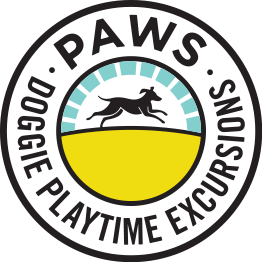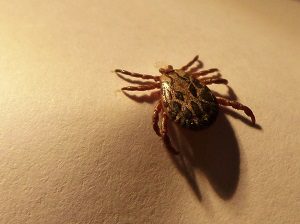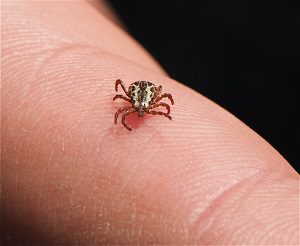How to Care for an Older Dog
August 9, 2017
Craig
Your canine pal is a key part of your family life. While it can be sad to think of them growing old, it is an entirely natural process. That said, when considering dog health care, there are some helpful tips to employ and early signs that can warn you of more serious problems related to your dog’s health. Follow these tips and advice and your canine best friend will remain an active and happy part of your life for years to come.
Diet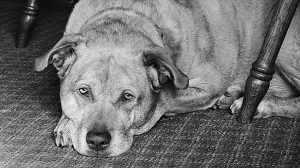
It’s not just humans who need to eat all their fruits and vegetables to be healthy! As dogs age they can become prone to bowel conditions such as constipation. Include just a small amount of fruit and vegetables in their diets however, and the extra fiber will help to stave off this uncomfortable condition – along with a bonus boost of vitamins.
The best dog food for older dogs will have a nutritional profile tailored to their specific needs. Don’t be afraid to check the labels and to add supplements if necessary. If you’re wondering how to help dogs with arthritis, prevention through diet is better than cure. Glucosamine Chrondrotin can be purchased in powder form from health food stores and added to dog food.
Arthritis in Dogs – Signs and Treatment
Sometimes no matter what you do, a dog will develop arthritis in its later years. It is important to know the symptoms so you can get your dog to a veterinarian as early as possible.
The symptoms include:
- Intermittent lameness
- Reluctance to sit up or generally walk around
- Stiffness in limbs – especially occurring immediately after exercise or a prolonged period of inactivity.
- Swollen joints and/or visible joint deformities
- Joints may feel warm to the touch
If your dog presents with any of these symptoms, book a visit to your vet immediately. There is no cure yet, but with early diagnosis, you can take advantage of a range of treatment options available which can help dogs with arthritis and minimize the pain and discomfort.
Older Dogs Losing Hair
Many older dogs may lose some hair in their twilight years – just resist the temptation to give them a comb over like Uncle Bob. Though there can be many underlying causes, Allergic Dermatitis is one of the most common. This is because older dogs can be more susceptible to allergens such as pollen, dust and chemicals from, for example, cleaning products.
Help your pal stay at his hairy best by avoiding his exposure to these chemicals and to weather extremes. Also make sure you groom him regularly, and that you use brushes and grooming tools with round teeth that don’t snag or tangle in his coat.
Heart Health
While heart disease in dogs can present with a number of symptoms, the following are some of the most common:
- Cough
- Difficulty breathing
- Reduced ability to exercise
- Loss of appetite and weight loss
- Weakness in the rear limbs.
As with arthritis, bring your pet to your dog health care provider as soon as one or more of these symptoms are apparent. There are various forms of dog heart medications that can be prescribed as well as techniques to manage, and even nullify, long-term damage. Catching heart disease early is the key to slowing, and often reversing, the damage.
Hearing Loss in Older Dogs
No, he’s not ignoring you! Dogs’ losing hearing, like humans, is an inevitable part of the aging process. While dogs will lose a certain amount of their hearing over time (this is referred to as natural geriatric nerve degeneration), hearing loss can be exacerbated by infection, injury or even a build-up of wax.
Don’t go poking about in Fido’s ears with a cotton bud, however; you will probably make things worse.
Instead, take your dog to a vet if they show any of these symptoms:
- No response to squeaking toys / clapping hands
- No response to snapping fingers behind the head
- No response to doorbells or other loud noises
- No response when called by name
- No response to other dogs
Like their human owners, dog’s bodies will change as they age, and they will naturally lose a certain degree of their abilities. But hey, can you still run around after a football like you did when you were six? Just as you know the limits of your own body so too will your dog.
It’s important to learn to help him adapt to the aging process and, more importantly, to learn to recognize the early signs of anything out of the ordinary. This will enable you to catch any serious problems early while they can still be stopped or even reversed. Follow these tips and you can maximize the time you have to love and enjoy the four-legged members of your family!
Read more like this:
Pet CareBrushing Your Dog’s Teeth: Oral Care for Canines
June 14, 2017
Craig
According to a study from 2013, 78% of dogs above age three suffer from bad breath, making it the most common health problem affecting dogs. While the prevalence of oral health issues is quite alarming, what’s more concerning is that a significant number of owners have not taken the adequate action to address the situation. Most dog owners consider bad breath to be just a thing dogs have, but poor oral health can lead to serious medical conditions which can adversely affect your dog’s liver, kidney and lungs. It is incredibly important as a dog owner that you adopt a good dental hygiene routine for your dog. Doing so will protect more than just your dog’s teeth.
Brushing Your Dog’s Teeth
The well-known saying “An ounce of prevention is worth a pound of cure” is very apt when dealing with your dog’s dental problems. Brushing your dog’s teeth regularly is a key part of dog dental care and will save you a ton of trouble down the road.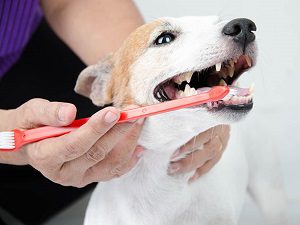
Conventional wisdom tells us that dogs have cleaner mouths than humans and are not as prone to cavities. But dogs can still develop tartar and plaque which can lead to dog tooth decay and gingivitis. To prevent this, regular brushing is highly recommended. Done incorrectly, brushing your dog’s teeth could be a very unpleasant experience for both of you. But here a few tips to follow to make the experience a lot more pleasant:
-
Start brushing your dog’s teeth as early as possible
Instilling a good dental care routine for your dog should ideally start when your dog is still a puppy. Puppies will have their full set of teeth when they are 8-10 weeks old. Don’t start by using a toothbrush; Use your index finger instead. Just put some dog toothpaste on your finger and gently massage his gums. Your dog will be more comfortable using a toothbrush if you first acclimate him to brushing with your finger.
-
Pick the right toothpaste for your dog
NEVER use human toothpaste for your dog as it will contain fluoride which is highly poisonous to dogs. Choosing the right flavor is very important as not all dogs like the same sort of toothpaste. Plan to try a few different types until you find the one your dog most enjoys.
-
Introduce the toothpaste gradually to your dog
When you’ve picked the toothpaste, have your dog lick it and get accustomed to the flavor so that brushing becomes easier.
-
Develop a routine
Brush your dog’s teeth when he’s calm and relaxed. The goal is to be able to set a specific time for the activity, perhaps shortly after he sees you brushing your teeth.
Dental Care Dog Foods
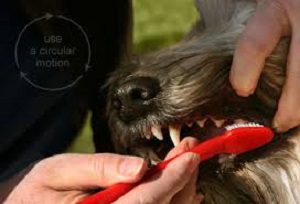 Maybe you don’t have the luxury of time to brush your dog’s teeth every day. Maybe you both hate the experience so much that doing it every other day feels like all you can handle. Or perhaps you just want to do a little extra to ensure your dog’s good oral health. Whatever the situation may be, you can supplement your dog’s dental hygiene through a special dental diet. While there are plenty of products in the market that claim to be dental care dog food, before buying any, you should look for the seal of approval for the Veterinary Oral Health Council (VOHC). You can check their website for a complete list of VOHC accepted products.
Maybe you don’t have the luxury of time to brush your dog’s teeth every day. Maybe you both hate the experience so much that doing it every other day feels like all you can handle. Or perhaps you just want to do a little extra to ensure your dog’s good oral health. Whatever the situation may be, you can supplement your dog’s dental hygiene through a special dental diet. While there are plenty of products in the market that claim to be dental care dog food, before buying any, you should look for the seal of approval for the Veterinary Oral Health Council (VOHC). You can check their website for a complete list of VOHC accepted products.
Dental care dog foods are required to have the same nutrient content as regular food but have added ingredients to help clean a dog’s teeth. Humans are told to eat carrots because they help clean the gunk off our teeth. In the same way, Kibbles and treats that are made for dental diets are larger in size and have a fibrous texture which breaks easily. The edges then scrub the teeth of your dog as he chews.
While dental diets have all the nutrients needed for a normal daily diet, you shouldn’t run out and switch your dog completely over to these dog food brands. Your dog may not be able to tolerate a diet comprised exclusively of dental food so to be safe, start by introducing the dental diet dog food and slowly increasing the amount.
Other Dental Care Products for Dogs to Consider
There are other doggie dental care products that will help protect your dog’s dental health. Chlorehexidine can be used as an oral cleansing agent to address dog dental inflammations and infections. Aside from the bitter taste, it has no known side effects. Dogs can also benefit from chewing on bones as a natural remedy.
While dog dental care products help, it is also important to schedule regular visits to your veterinarian. The veterinarian will be able to assess if the overall dental health of your dog and recommend solutions should there be problems identified.
Putting in the effort to take care of your dog’s oral hygiene can be daunting but this will lead to a healthier and longer life for your beloved companion which makes it all worth it.
Read more like this:
Pet CareLyme Disease and Your Dog: Prevention and Treatment
April 5, 2017
Craig
For canine aficionados, our dogs are the best companions when walking and enjoying the outdoors. While we love their contagious energy, it also means they need regular exposure to their natural environment. Unfortunately, this very same seemingly safe milieu is the source of one of the most common illnesses that affect man and his best friend: Lyme disease.
The good news is, Lyme disease in both humans and dogs is both easily preventable and highly treatable. As long as you know what is Lyme disease in dogs, the signs to look out for and various treatment options, you are your canine best friend should be just fine.
What is Lyme Disease in Dogs?
Lyme disease in dogs is caused by the bacteria Borrelia burgdorferi (Bb) found in ticks. It is an infectious, vector-borne disease that is prevalent in areas of the United States with high human and pet populations, such as the Pacific coast, the Northeast and the Midwest. The disease is transmitted when the Bb-carrying ticks feed on animals.
Lyme disease is common in dogs because these bacteria-carrying ticks are so tiny they are difficult to notice. The disease will only affect your dog if the tick is attached to it for about 48 hours. If within that period of time, a tick dies or is removed from the potential host, the Bb bacteria it could be carrying will not be transmitted.
Because every fun minute our dogs spend with Mother Nature renders them increasingly vulnerable to ticks, we must be well-informed and take some precautions to protect them from tick-transmitted diseases.
Symptoms of Lyme Disease in Dogs
So how do we know if our beloved pets have been preyed upon by these microscopic Borrelia-borne disease-carriers?
Lyme disease symptoms in dogs include a sudden onset of arthritis, lameness, loss of appetite and weight, and lethargy. What makes Lyme disease challenging for some people to detect and address is that the symptoms appear only in 5-10% of affected dogs. So your dog could actually be breeding Lyme (first discovered in Lyme, Connecticut in 1975) without you knowing it.
According to the Center for Disease Control and Prevention (CDC), signs of tick-borne diseases may not appear for 7-21 days or longer after a tick bite, so do closely monitor your dogs if you think they have been bitten by a tick.
It would be wise to contact your veterinarian immediately if your dog is experiencing any of these symptoms. If left untreated, Lyme disease could lead to kidney failure. Warning signs of a more serious condition include vomiting, thirst, diarrhea and increased urination.
Preventing Lyme Disease
The best way to prevent Lyme disease from affecting your dogs is to keep them from roaming around in tick-infested areas where this illness is common. If possible, avoid these environments especially during periods when ticks are most active.
On a daily basis, check your dog’s coat and tail for ticks. Try to remove them all by hand. Note that ticks carry other diseases besides Lyme disease, so their immediate removal from your pets protects them from acquiring other illnesses as well.
There are solutions such as sprays and topical products in the market that can effectively kill and repel ticks. Keep an eye out for the ingredient Permethrin. When applied to your dog (must NOT be used on cats), the tick that attached to it dies within 12 hours, halting transmission of the B. burgdorferi. Another reliable ingredient is Fipronil. As for tick collars, look for one that contains amitraz – an organophosphate that can instantly kill ticks but is not as helpful in combating fleas.
Vaccination is recommended only for dogs in areas where Lyme disease is common. This is also advisable for dogs that were infected once with B. burgdorferi, because they can still contract the disease. Even vaccinated animals are still at risk so vaccinating your dog doesn’t mean you get to be careless.
If you decide to try any of these products, please check with your veterinarian first.
How to treat Lyme Disease in Dogs
So what if your dog does succumb to this illness? Is Lyme disease curable in dogs?
The answer is yes, there is treatment for Lyme disease in dogs. A reliable Lyme disease in dogs treatment is good old antibiotics. Lyme disease in dogs treatment generally includes Doxycycline, the most commonly prescribed antibiotic for Lyme disease. Dogs also respond well to Amoxicillin, another popular antibiotic. Any type of treatment is recommended for 30 days. Veterinarians may also prescribe an anti-inflammatory (pain reliever) together with the antibiotic for animals with severe arthritis.
Lyme disease is not the plague, but it is still painful and scary when it hits. As the saying goes “an ounce of prevention is is worth a pound of cure” and it is incredibly true when it comes to your beloved dog and his health, especially with regards to Lyme disease. So enjoy your time outdoors together but check your dog regularly for ticks.
Read more like this:
Pet CarePet Insurance – Do You Need It?
March 1, 2017
Craig
 Due to recent healthcare laws, nearly everyone in the country has at least one type of insurance: life, auto, home, health, limited liability, business, workers’, etc. But these cater to humans. Did you know your pet can have insurance too? While that might sound strange to you, pet insurance has been around for about a century in Sweden where 50 percent of pets are already covered. In North America, Lassie was instrumental since he was the first dog to be given such policy. As a business, pet insurance is a multi-million-dollar industry with an almost 13 percent growth annually. In other words, it’s popular. However, does your dog need it?
Due to recent healthcare laws, nearly everyone in the country has at least one type of insurance: life, auto, home, health, limited liability, business, workers’, etc. But these cater to humans. Did you know your pet can have insurance too? While that might sound strange to you, pet insurance has been around for about a century in Sweden where 50 percent of pets are already covered. In North America, Lassie was instrumental since he was the first dog to be given such policy. As a business, pet insurance is a multi-million-dollar industry with an almost 13 percent growth annually. In other words, it’s popular. However, does your dog need it?
What Is Pet Insurance?
Pet insurance works similarly to human insurance in that it is meant for financial protection. For example, life insurance for humans can be used to cover for income loss upon death or permanent disability (if this is in the rider), as well as to pay for estate taxes (if the state has those taxes). If it’s a variable-unit linked insurance (VUL), the policy can help build investments, which may be withdrawn during retirement or death. Either way, the insurance helps reduce financial drain.
Want an example as to how this might work for your dog? Let’s say your dog Spot has an insurance policy with coverage worth $20,000. After a few years, the vet diagnoses him with cancer, and he needs to undergo surgery for a total of $10,000. Instead of having to pay the entire cost using your savings (or credit card, etc), you claim a chunk of it against the insurance.
I said “a chunk”. You’ll learn later about excess.
What Does Pet Insurance Cover?
The coverage of the pet insurance depends on many factors, including the type of insurance you choose, the provider, and state regulations. In general, coverage may include the following:

- Routine vet visits
- Accidents
- Illnesses
- Genetic conditions
- Therapies
- Behavioral issues
On the other hand, insurers may provide you with the following:
- Accident-only plan – You can claim against the dog insurance only if your pet has an accident. It cannot be used for ongoing conditions.
- Condition with/without time limit – You can claim against the dog insurance for every condition, although the coverage may (or may not) have a time limit, which can be 12 months or more.
- Lifetime pet insurance – This is the most comprehensive type of pet insurance that provides coverage for virtually everything up to the maximum limit set by the insurer. While it says lifetime, it is renewable each year.
Pros and Cons of Pet Insurance
The biggest pro of having dog insurance is you will be spared from a potential financial burden if your pet unexpectedly gets sick or has an accident. The costs of veterinary care aren’t so bad in comparison to those of medical care for humans, but they can still be expensive.
Furthermore, having pet insurance means you’ll be more responsible in your routine vet visits. These visits are important because they can help prevent or reduce the risks of diseases that may be costly to treat later.
On the downside, pet insurance may still be pricey and cost over $100 a month. Many factors can affect the premium such as age, genetic risks, and dog’s behavior, but the bottom line is that owners of high-risk breeds tend to pay more.
Having pet insurance doesn’t mean you’re going to fully avoid any out-of-pocket costs in the future. In fact, many policies require paying for an excess, also known as a co-pay. If you opt for a plan without an excess, your premium will soar. Pet owners should also remember most insurers don’t cover pre-existing conditions.
Lastly, insurers have the option to refuse your application or honor the policy. Even if you have a lifetime insurance coverage, you can still be denied acceptance since it is renewable each year.
Is Dog Health Insurance Worth It?
The more appropriate question is, how much do you love your pet? Do you love it enough you want to provide the best veterinary care when he needs it the most? Do you love your dog so much you want to make sure he’s healthy for as long as he can be?
I believe a person buys insurance out of love. If you get a life insurance policy for yourself, it means you don’t want your family to be burdened with funeral and other expenses when you’re already gone. It’s the same thing with dog health insurance. Unless you can assure yourself you have the means to cover any potential vet expenses in the future, you may want to seriously consider getting pet insurance.
I understand that pet insurance is in investment, so hit’s a good plan to compare dog health insurance reviews. Know their coverage, premiums, deductibles, and terms and conditions. You can also use this guide to determine whether the insurer follows the state rules and regulations. An informed decision is always best and your dogs future health is worth spending a bit of time and money to ensure.
Read more like this:
Pet CarePuppy Play Time : A Great Way to Bond with Your New Dog
February 15, 2017
Craig
If you’ve recently adopted a new puppy, you’ve probably noticed that he has an abundance of energy and needs a lot of activity. As with a human child, one of the best ways to help him expend that energy, create a bond between you two and teach him how to behave, is with lots of puppy play time. Play time goes beyond regular walks and cuddles and is an important for your dog throughout his life. The way you play with him as a puppy will impact the way he expects to play with you as he ages so be sure to play with him in a way that is healthy for both of you.
How to Play With a Puppy Without Encouraging Biting
One thing you need to be careful about when playing with your puppy is to avoid encouraging biting. If you encourage your dog to bite you or anything that isn’t his toy during playtime, he might try playfully biting other people or objects when you aren’t playing. The person he might bite probably won’t care that it was meant as a playful nibble and given California’s strict dog bite laws, one playful bite can be too many.
Outdoor Games for Your Puppy
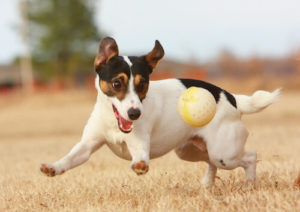
Some of the best playtime for your puppy will involve him expending lots of energy running around the park or the yard. Ensuring he gets enough exercise will help prevent depression and bad behaviors like chewing. Some games you can play with your puppy outdoors:
- Chase: Your puppy will love this game, whether you’re the one chasing him or he’s chasing you. If he’s chasing you, it’s more likely to be a game of Keep Away where he’s after the toy or the treat in your hands, but either way, it’s a great game for both of you to get plenty of exercise. Feel free to stop when you get tired as your puppy will no doubt outlast you in this game.
- Fetch: Fetch is a great game to play with puppy if you want to exhaust him and conserve as much of your energy as possible. You can play it with everything from a stick to a frisbee to a tennis ball. If you’re playing with a ball or frisbee, be sure to buy one made for dogs to hold in their mouths. The normal “human” versions could hurt them.
Games to Play With Your Puppy Indoors
While bonding with your puppy is lots of fun, sometimes after a long day of work or when the weather is bad, you just want to spend your relaxing indoors, not chasing him around your yard or the nearby park. On these days, don’t deprive your puppy of his much-needed playtime
Instead, try to engage your puppy in one of these games:
- Hide and See
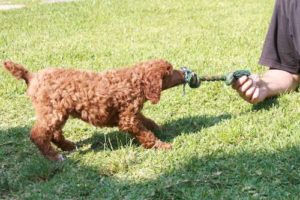 k : You can play hide and seek with your puppy either by hiding yourself and having him find you or by hiding a treat he then gets once he finds it. Just remember that puppies are like small chlidren and won’t have the foresight or attention span to look for things that are hidden too well. Hide yourself somewhere obvious like behind a door or put the treat under a chair or on a windowsill. If your puppy loves this game, you could train him to help you find things you’ve misplaced, like your keys or cell phone.
k : You can play hide and seek with your puppy either by hiding yourself and having him find you or by hiding a treat he then gets once he finds it. Just remember that puppies are like small chlidren and won’t have the foresight or attention span to look for things that are hidden too well. Hide yourself somewhere obvious like behind a door or put the treat under a chair or on a windowsill. If your puppy loves this game, you could train him to help you find things you’ve misplaced, like your keys or cell phone.
- Tug of War : Most dogs, and especially puppies, adore this game, but you have to establish some ground rules to ensure things don’t get out of hand and result in a trashed house. Be sure to teach your dog beforehand to release on command and always watch your puppies behavior while you’re playing. A playful growl accompanied by a wagging tail is fine. A more serious growl isn’t. And if your puppies teeth ever touch your hand, even accidentally, stop the game immediately. It’ll be a more fun game for your puppy if you let him win occasionally.
Not every puppy will enjoy every game so don’t be worried if your puppy loves tug of war and hates fetch. He may change his mind as he grows older or he may not. Don’t force him to play a game he hates. It’s more important to make sure he’s getting the exercise he needs while having fun with his new best friend – you.
Read more like this:
Pet CareAre Dog Leashes a Form of Animal Cruelty?
January 20, 2017
Craig
Owning a pet, especially a dog, can be one of the best decisions you’ll ever make in your life. For one, it provides you with a wide range of health benefits. Did you know dogs can “smell” cancer? Or that exposing your children to them at an early age can help control pet allergies later in life? How about the fact it can reduce depressive symptoms? Surely, you’ve heard of alert or service dogs. They’re so important they are the only pets allowed on flights. These benefits require fulfilling certain responsibilities, however. These include making sure your dogs are well behaved and controlled when you’re out of the house.
To control them, most dog owners resort to using leashes, but there’s bad news: these common pet accessories can do more harm than good.
But First, Know the Difference
Before I explain th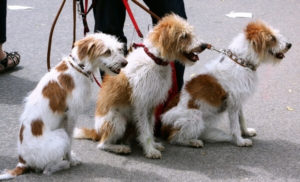 e reason, let’s define what a leash is and its difference from collars and harnesses.
e reason, let’s define what a leash is and its difference from collars and harnesses.
Also known as a lead line, a leash is a cord or strap that is attached to the dog through the collar or the harness.
Now, what are a collar and a harness? They are similar are they are attached to the leash, but they differ in how your dog wears them: collars are placed around the neck while the harness wraps around the dog’s torso. You’ll understand the significance of this difference later.
Leashes have two purposes: (1) providing your dog the freedom to move around while (2) still maintaining control over its behavior. For example, if your dog tries to wander too far away, you can pull on the leash. This is commonly done on walks when a dog tries to dash into the street in pursuit of a squirrel or gets excited and wants to jump up on their new friend, whether it’s a fellow dog or a human.
Leash Styles
There are many different styles of leashes:
- Retractable Leash – This is probably the most popular of all leashes. It usually comes with a plastic handle with a rope coil and a clip that can be attached to the dog’s collar or harness. Because the rope is long – it can be as long as 25 feet – dogs can cover more area during the walk.
- Slip Leash – Sometimes called the slip collar, this one is normally used for training and competitions when leashes have to be frequently changed. It’s easy to wear: slip it around the dog’s neck, and you’re done!
- Braided Leash – You’ll probably see this more often during leash or obedience training. Made from leather, the leash is soft to touch, but since it’s braided, it also provides an excellent grip.
The Problem with Using Leashes

Leashes are undeniably an effective way to establish authority over your dog, help the dog pay attention and follow commands, correct the pooch’s mistakes, and prevent unfortunate accidents in the street.
They can also cause serious to fatal injuries! How can this happen?
It depends on whether you’re using a collar or a harness. The biggest issue with a collar is it can potentially break the dog’s neck or windpipe (trachea), cutting off the dog’s air supply. This occurs when you or the dog strongly or suddenly pull the leash.
A smart alternative to a collar is a harness since it distributes the pressure to other parts of the boy, sparing the neck from injury. The problem is it’s not ideal when you have a poorly trained pooch as the harness doesn’t give great control.
A dog can also hurt or kill itself when the leash is long. For example, the leash can wrap around your dog’s leg causing your dog to trip over it.
You are not necessarily safe from injury either. Over time, leashes can cause scrapes or skin burns from a tight grip or rubbing. They can be very painful and prevent you from holding the leash correctly.
The Best Option: Off-Leash Dog Walking
So what’s the best choice? Off-leash dog walking!
People in San Francisco are lucky as our city has one of the greatest number of dog parks in the country, so there’s a good chance you can find one close to your home. If you’re working in Silicon Valley, many offices are pet-friendly, and some California dog parks are within the area. Besides, dogs need an average of only 30 minutes a day to keep them healthy.
In this setup, you can:
- Give your dog some much-needed exercise and enough time to explore its environment.
- Let the dog learn to interact with other breeds and humans in the most natural way.
- Meet other people! These off-leash dog parks can help form great friendships.
- Interact with pet-oriented individuals and businesses like vet clinics and groomers.
 If you’re unable to take your dog to a dog park regularly, consider setting up play dates or contracting a dog walker who specializes in off leash dog walks. Paws Dog Camp offers regular doggie playtime excursions you can learn more about on Our Services page.
If you’re unable to take your dog to a dog park regularly, consider setting up play dates or contracting a dog walker who specializes in off leash dog walks. Paws Dog Camp offers regular doggie playtime excursions you can learn more about on Our Services page.
Dogs love us humans unconditionally. Don’t you think it’s time we love them back properly? One of the best ways to show that is by making sure they are always safe when they are out of the house, perhaps for training or walking. Although using leashes can still be helpful in controlling your dog’s behavior, our furbabies tend to thrive better when they’re able to run freely, off-leash.
Places like dog parks and off leash walks give them the environment they need to improve their agility, curiosity, and socialization skills. A healthy social dog, is a happy dog, so don’t choke your dogs creativity and exercise with a leashed stroll around the block when you have so many better options nearby.
Read more like this:
Pet CareWhy Your Dog Needs Plenty of Exercise
January 15, 2017
Craig
You know it’s b est for your health if you go outside for some fresh air and exercise on a regular basis. You could work out, indoors, at the gym, but you live in a part of the country where the weather is great all year round and having a run outside, in the fresh air, is always so much better. The time in nature clears your head and the exercise helps you feel and sleep better.
est for your health if you go outside for some fresh air and exercise on a regular basis. You could work out, indoors, at the gym, but you live in a part of the country where the weather is great all year round and having a run outside, in the fresh air, is always so much better. The time in nature clears your head and the exercise helps you feel and sleep better.
It’s the same way for your dog. You could send him off with a traditional dog walker, one who will pop him onto a leash and take him, along with several other dogs, for a stroll through the crowded downtown where he’ll smell car fumes and see traffic, but be very safe as part of this leashed herd of animals. Or, you could take him out into nature where he’ll get all the same benefits you do from the fresh air and varied terrain. Whenever possible, you should take him with you on your runs or even walks. You’ll both benefit in a variety of ways.
- Digestive Health : Funny though it may sound, regular exercise helps keep your dogs digestive tract running smoothly (it does the same for you, by the way.) It also makes him less likely to catch urinary tract infections. With abundant and regular exercise for your pet, your job cleaning up after them will be so much easier and you may end up taking fewer trips to the vet.
- Weight Control : Dogs who aren’t exercising enough are often overweight and as with humans, those extra pounds come with plenty of health risks. Obese dogs have an increased risk of respiratory disease, heart disease and diabetes. Extra weight magnifies issues like arthritis and hip displasia and can stress tendons, joints and ligaments. Older dogs can have a hard enough time getting up without the further issue of lifting surplus weight.
- Better Mental Health : This may sound like a stretch but dogs are like humans in this. Active dogs are less inclined to suffer from depression and may live longer as a result.
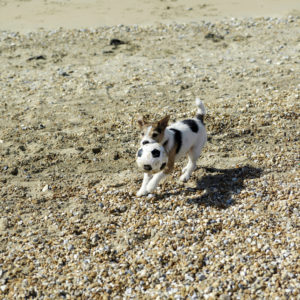
- Better Behavior : A dog who is digging and chewing is doing so because he is bored and doesn’t have a better outlet for his energy. If your dog is able to expend that energy through daily exercise, he’s less inclined to dig and chew. He’s also less likely to bark and will likely be calmer overall.
- More Confidence : If you’re exercising with your dog, you’re strengthening your bond and he will likely feel more secure and happier. The same applies if you’re using the same dog walker regularly. If your dog is exercising in a group of dogs, one where he actually interacts is not just trotted alongside them for a few blocks, he’ll have the opportunity to socialize with other dogs and gain confidence from his friendships.
Regular movement and exercise is important for both humans and dogs. Just as you feel restless and bored when stuck indoors at work all day, staring longingly outside at the sunshine and fresh air, so does your dog. Make sure you’re giving him the chance to stretch his legs and enjoy the beautiful weather, whether you can take him outside yourself or hire someone to do it. A little more exercise now could mean a few more years with a happy and healthy dog.
Read more like this:
Pet Care